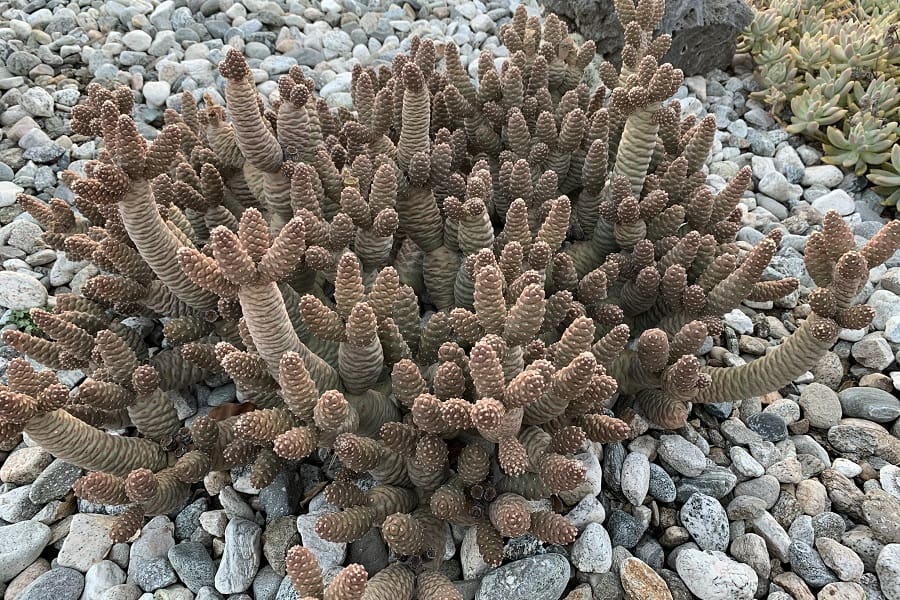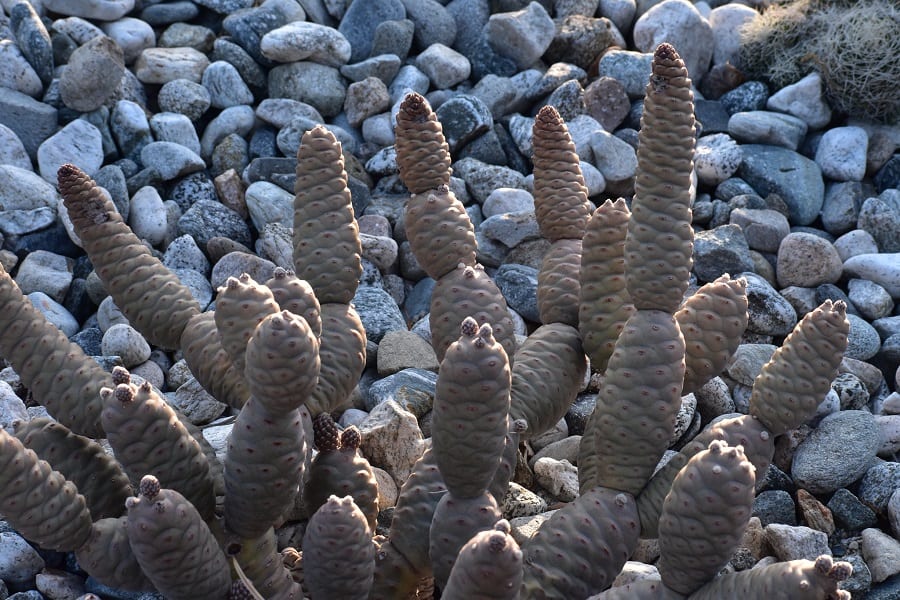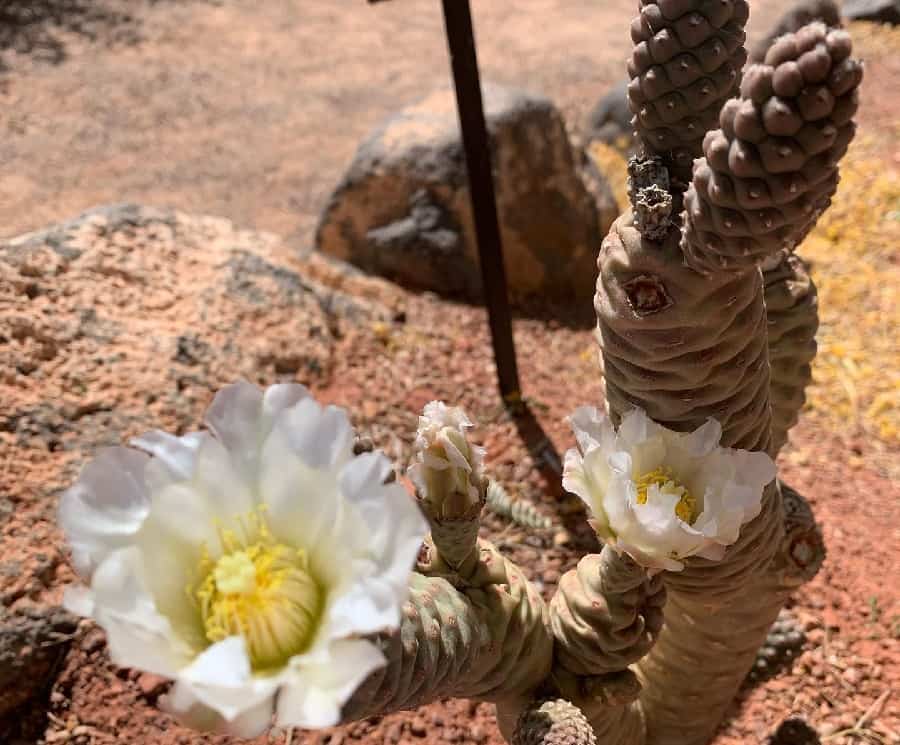Opuntia turpinii: Characteristics and Care
If you’re a cactus lover with an eye for the unique, then the Opuntia turpinii is sure to capture your heart. With its pinecone-like appearance and cylindrical stems, this oddball in the cactus family has a quirky charm that instantly draws you in. From its thick, brown pinecone pads to the tiny white flowers that bloom in summer, the Opuntia turpinii is a true showstopper. Let’s dive into what makes this peculiar plant so mesmerizing.

Contents
About Opuntia turpinii
The pinecone cactus, as it’s affectionately known, is a close cousin to the classic prickly pear opuntia but with a distinctly different look. Its thick, brown stems resembling pinecones grow in clusters, ranging from 2 inches to 2 feet long and about 1.5 inches wide. Despite the cactus’ spiky appearance, it’s nearly spineless with just a few small glochids (those pesky little prickles). In summer, white flowers bloom from the tips of the pinecone pads, adding to its unique charm.
Related Post:
195 Opuntia Varieties [With Pictures]
How to Care for Opuntia turpinii
Light
Like any good cactus, Opuntia turpinii craves lots of bright, direct sunlight. An exposed patio or sunny windowsill is the ideal spot. During scorching summer days, provide some afternoon shade to prevent sunburn. If growing indoors, use a grow light situated just 6-12 inches away for 12-14 hours per day.
Watering
Ah, the joys of an ultra drought-tolerant plant! The pinecone cactus can go weeks without water. When the soil is bone dry, give it a good soak, waiting for the excess to drain completely. Water about every 1-2 weeks in spring through fall, and monthly in winter. Use rainwater if possible to avoid mineral buildup.
Just be careful not to mist or splash the pinecone pads directly – water on the stems can lead to rot. Speaking of rot, always ensure the pot has drainage holes to prevent soggy soil.

Soil
This thirsty plant likes its soil very well-draining and aerated. A cactus/succulent potting mix blended with 50% extra perlite or coarse sand is ideal. Add some compost or worm castings for nutrients. The goal is fast-draining yet moisture-retaining soil.
Choose a container with drainage holes and use an unglazed terracotta pot if possible – it will wick away excess moisture. Go just one size up when repotting to avoid excess soil. And repot in spring or fall while the plant is still dormant.
Fertilizer
When those pinecone stems start poking out new growth in spring, that’s the cue to apply a balanced fertilizer every 4-6 weeks until fall. Too much fertilizer can cause burn, so go lightly. No feeding is needed over winter.
Temperature and Humidity
With its origins in hot, arid regions, Opuntia turpinii thrives in warm temps from 65-95°F. Anything below 50°F can trigger dormancy. Keep humidity low – too much moisture in the air increases disease risk.

Pests and Diseases
The pinecone cactus doesn’t attract many critters, but watch out for mealybugs, spider mites, and fungi like anthracnose or stem rot in overly damp conditions. Prune out any diseased sections quickly.
Pruning
There’s virtually no pruning needed other than removing any dead or damaged pinecone pads. And have no fear if a pad happens to fall off – this is the pinecone cactus’s way of self-propagating!
How to Propagate Opuntia turpinii
Speaking of propagation, reproducing this unique guy is a cinch:
- Let a fallen pad dry for several days before replanting in fresh soil
- Take stem cuttings and allow the wound to callus over before potting
- Try seed propagation (just be patient, cacti grow slowly from seed)
With its whimsical form and easy care, the pinecone cactus makes an offbeat yet low-maintenance addition to your plant collection. Grab one of these wacky wonders and enjoy its striking one-of-a-kind beauty!
